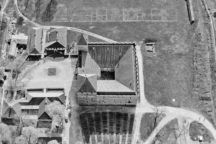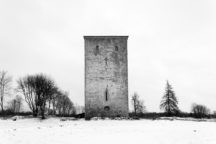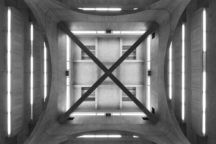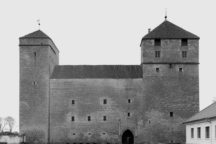If we try to carefully formulate the origins of this project, then let’s start from the concept of meaningful reticence.
Louis Kahn was very succinct when talking about his origins: he came from an island with a castle. In the film My Architect Nathaniel Kahn mentions this as the sentence he heard from his father as a memory of his childhood. A chapter in Anne Tyng’s book The Rome Letters 1953-1954 is titled “Born on a Castled Island in the Baltic”. During the Cold War period in the US, the island and castle took on a fairy-tale quality.
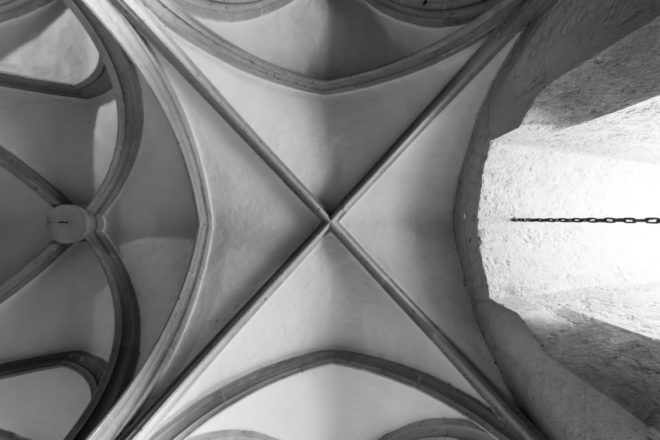
Bishop’s Castle (14th century) in Kuressaare on the island of Saaremaa, Estonia / Groin vaults
Photograph by Arne Maasik 2018
“Kahn’s castle” – the bishop’s castle or the Kuressaare Castle as it is popularly known – exists. The structure is located on the territory of the Republic of Estonia, on an island called Saaremaa, in a town called Kuressaare. It dates back to the 14th century. It has survived in extremely good condition. It represents the late Gothic style of architecture. Its floor plan is that of a convent building. It is built of local dolomite. The façade has two towers – the more slender Tall Herman watchtower and the stockier defensive Sturvolt tower. The medieval bishop’s castle is surrounded by bastions and moats filled with water, which date back to the 16th-17th centuries.
Actually, it can be said that no one today sees “Kahn’s castle” as he saw it – in both the physical and mental sense. The castle’s meaningful reticence seems to have lasted for decades, amazingly consistently and on amazingly many levels, waiting patiently for someone to accept the hermeneutical challenge to analyze it.
Kahn. The Islander. Text by Heie Treier. Photographs by Arne Maasik.
Tallinn 2016. Publisher Louis Kahn Estonia Foundation.
